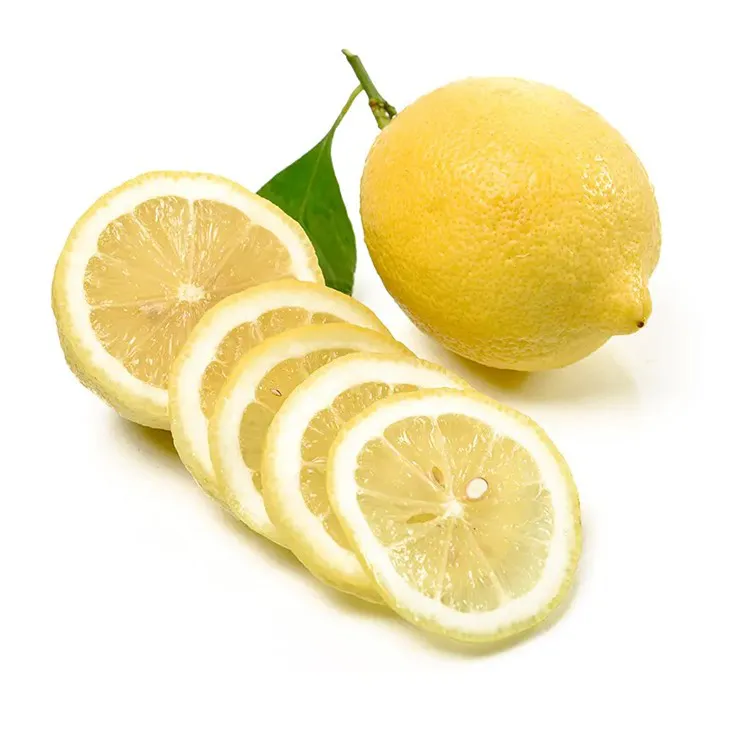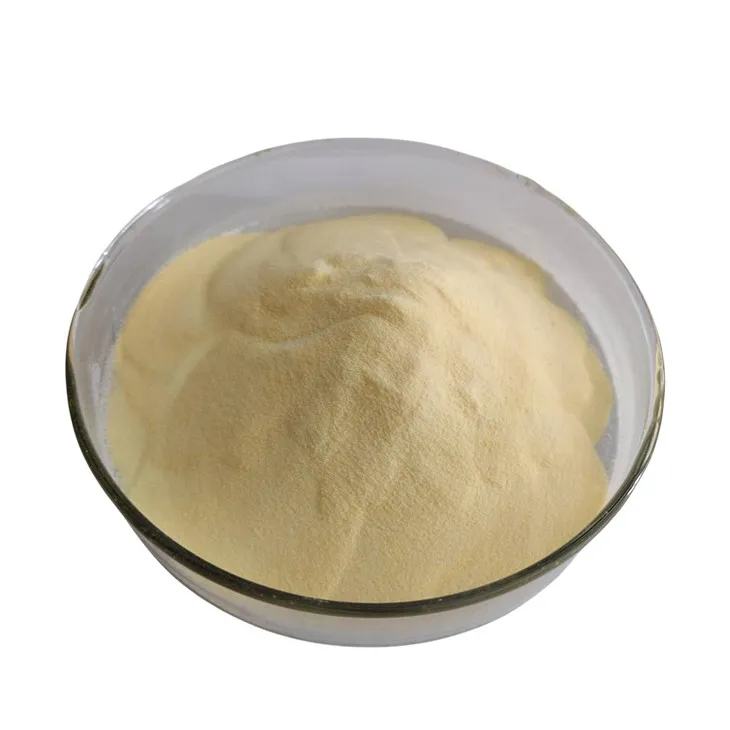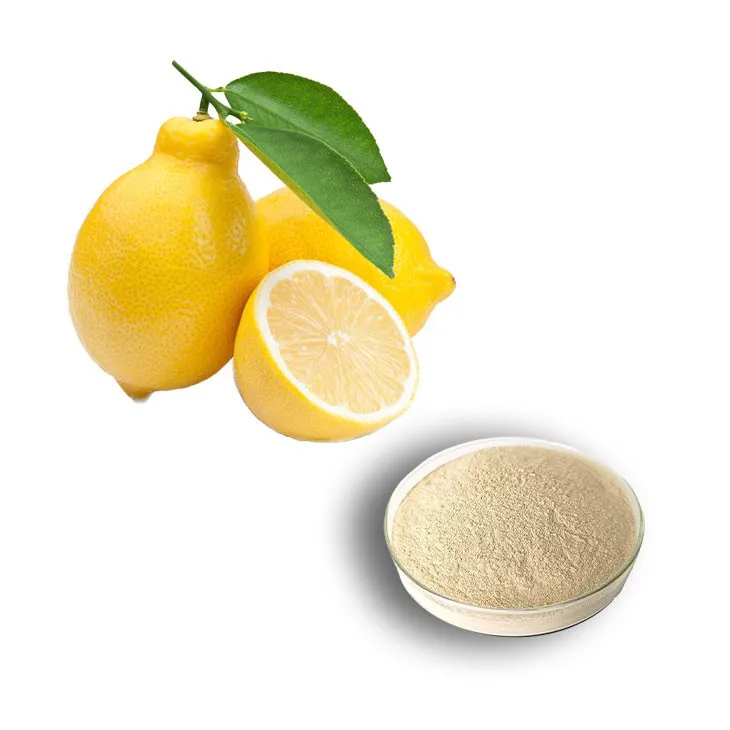- 0086-571-85302990
- sales@greenskybio.com
Extraction Technology and Production Process of Lemon Extract.
2024-11-29

1. Introduction
Lemon Extract has become an important ingredient in various industries. In the food industry, it is used to add a refreshing lemon flavor to products such as beverages, candies, and baked goods. In the cosmetics industry, Lemon Extract is valued for its skin - brightening and antioxidant properties. In the pharmaceutical industry, it may have potential health - promoting effects. Given its wide - ranging applications, understanding the extraction technology and production process of Lemon Extract is of great significance.

2. Traditional Extraction Methods
2.1 Solvent Extraction
Solvent extraction is one of the traditional methods for obtaining lemon extract. The process involves the following steps:
- Raw material selection: High - quality lemons are chosen. The lemons should be fresh, free from diseases and bruises. This is crucial as the quality of the raw material directly affects the quality of the final extract.
- Pre - treatment: The lemons are washed thoroughly to remove dirt, pesticides, and other contaminants. Then, they are usually peeled and the pulp is separated from the seeds. The peel can also be used for extraction as it contains valuable compounds.
- Extraction: An appropriate solvent is selected. Commonly used solvents include ethanol, methanol, and ethyl acetate. The pre - treated lemon material is soaked in the solvent for a certain period. During this time, the desired compounds in the lemon dissolve into the solvent. For example, the essential oils, flavonoids, and other bioactive components are gradually transferred from the lemon to the solvent. The extraction time, temperature, and solvent - to - material ratio need to be carefully controlled to optimize the extraction efficiency.
- Purification: After extraction, the resulting solution contains not only the desired lemon compounds but also some impurities. Purification methods such as filtration and centrifugation can be used to remove solid impurities. Then, techniques like distillation may be employed to separate the solvent from the extracted compounds, leaving behind a more concentrated lemon extract.
- Concentration: The purified extract may still have a relatively low concentration of the active components. Concentration methods such as evaporation under reduced pressure can be used to increase the concentration of the lemon extract to the desired level.
2.2 Steam Distillation
Steam distillation is another traditional extraction method for lemon extract, especially for obtaining lemon essential oil.
- Raw material preparation: Similar to solvent extraction, fresh lemons are selected and pre - treated. The lemons are usually cut into small pieces to increase the surface area for better interaction with steam.
- Steam generation and distillation: Steam is generated and passed through the pre - treated lemon material. The heat from the steam causes the volatile compounds in the lemon, such as essential oils, to vaporize. These vapors are then carried along with the steam. The temperature and pressure during steam distillation need to be carefully controlled to ensure the proper extraction of the volatile components without degrading them.
- Condensation: The vapor - steam mixture is then passed through a condenser. In the condenser, the vapors are cooled and condensed back into a liquid state. Since the essential oil is not miscible with water, it forms a separate layer on top of the water layer.
- Separation: The separated essential oil layer can be collected. However, this lemon essential oil - water mixture may still contain some impurities. Further purification steps such as filtration through a fine filter may be required to obtain a high - quality lemon essential oil. If a more comprehensive lemon extract (including non - volatile components) is desired, the remaining aqueous phase can also be processed further using other extraction methods.

3. Modern Extraction Methods
3.1 Supercritical Fluid Extraction
Supercritical fluid extraction (SFE) has emerged as a modern and efficient method for lemon extract production.
- Supercritical fluid selection: Carbon dioxide (CO₂) is the most commonly used supercritical fluid in lemon extract extraction. At supercritical conditions (above its critical temperature and pressure), CO₂ exhibits unique properties such as low viscosity, high diffusivity, and the ability to dissolve a wide range of compounds. These properties make it an ideal solvent for extracting lemon components.
- Raw material handling: High - quality lemons are still the starting point. They are pre - treated in a similar way as in traditional methods, including washing, peeling (if necessary), and separating the pulp from the seeds.
- Extraction process: The pre - treated lemon material is placed in an extraction vessel. Supercritical CO₂ is then introduced into the vessel. The extraction occurs as the supercritical CO₂ penetrates the lemon material and selectively dissolves the desired compounds, such as essential oils, flavonoids, and phenolic compounds. The extraction conditions, including pressure, temperature, and extraction time, can be precisely controlled to optimize the extraction of specific components.
- Separation and collection: After extraction, the pressure of the supercritical fluid - extract mixture is reduced. This causes the supercritical CO₂ to return to its gaseous state, leaving behind the extracted lemon compounds. The extracted compounds are then collected. Since CO₂ is a non - toxic, non - flammable gas, it can be easily recycled, making the SFE process more environmentally friendly compared to some traditional extraction methods.

4. Comparison of Different Extraction Methods
- Solvent extraction:
- Advantages: It is a relatively simple and cost - effective method. A wide range of solvents can be chosen depending on the target compounds. It can extract both polar and non - polar compounds effectively.
- Disadvantages: The use of organic solvents may pose safety risks due to their flammability and toxicity. Residual solvents in the final extract may also be a concern, especially in applications where high purity is required, such as in the pharmaceutical industry.
- Steam distillation:
- Advantages: It is a well - established method for extracting volatile compounds, especially essential oils. It does not require the use of organic solvents, which makes the resulting extract more "natural" in a sense. The process is relatively easy to scale up for industrial production.
- Disadvantages: The method is mainly suitable for volatile compounds, and non - volatile compounds are not effectively extracted. The extraction process may be time - consuming, and the energy consumption can be relatively high.
- Supercritical fluid extraction:
- Advantages: It offers high selectivity, allowing for the extraction of specific compounds with high purity. The extraction process is relatively fast, and the use of supercritical CO₂ is environmentally friendly as it is non - toxic and can be recycled. It can also extract a wide range of compounds, including those that are difficult to extract by other methods.
- Disadvantages: The equipment for supercritical fluid extraction is relatively expensive, which may limit its widespread use in small - scale production. The operation and maintenance of the equipment also require specialized knowledge and skills.

5. Production Process Optimization
- Quality control of raw materials:
- Regular monitoring of lemon sources is essential. This includes checking for pesticide residues, heavy metal content, and overall freshness. Only lemons that meet strict quality standards should be used in the production process. This helps to ensure the safety and quality of the final lemon extract.
- Process parameter optimization:
- For each extraction method, the parameters such as temperature, pressure, extraction time, and solvent - to - material ratio need to be optimized. This can be achieved through experimental design and data analysis. For example, in solvent extraction, by conducting experiments with different ethanol concentrations and extraction times, the optimal conditions for maximizing the extraction of flavonoids can be determined.
- Combination of extraction methods:
- In some cases, a combination of different extraction methods can be beneficial. For instance, steam distillation can be used first to extract the essential oils, and then solvent extraction can be applied to the remaining material to obtain other bioactive compounds. This way, a more comprehensive lemon extract can be produced.
6. Conclusion
The extraction technology and production process of lemon extract are complex and diverse. Traditional methods such as solvent extraction and steam distillation have their own advantages and limitations, while modern methods like supercritical fluid extraction offer new possibilities. By understanding these methods and optimizing the production process, it is possible to produce high - quality lemon extract that meets the requirements of various industries. Continued research and development in this area are expected to further improve the extraction efficiency, quality, and environmental friendliness of lemon extract production.
FAQ:
What are the common traditional extraction methods for lemon extract?
Two common traditional extraction methods for lemon extract are solvent extraction and steam distillation. Solvent extraction involves using a suitable solvent to dissolve the desired components from the lemon material. Steam distillation utilizes steam to carry over the volatile compounds from the lemon, which are then condensed and collected.
How does supercritical fluid extraction work in lemon extract production?
In supercritical fluid extraction for lemon extract, a supercritical fluid (usually carbon dioxide) is used. Supercritical fluids have properties between those of a liquid and a gas. The supercritical CO₂ is passed through the lemon material. It can selectively dissolve the target compounds in the lemon due to its unique solvating power. Then, by changing the pressure and temperature, the dissolved compounds can be separated from the supercritical fluid, obtaining the lemon extract.
What is the importance of raw material selection in the production of lemon extract?
The selection of raw materials is crucial in lemon extract production. High - quality lemons ensure a rich content of the desired compounds in the extract. Factors such as the variety of lemon, its ripeness, and the origin affect the composition of the extract. For example, different lemon varieties may have varying levels of essential oils or bioactive compounds. Selecting fresh and suitable lemons is the first step to produce a high - quality lemon extract.
What are the steps in the purification process of lemon extract?
The purification process of lemon extract may involve several steps. One common method is filtration, which can remove solid particles and impurities. Another step could be chromatography, which can separate different components based on their chemical properties. This helps in obtaining a more pure form of the lemon extract, free from unwanted substances and with a higher concentration of the desired active ingredients.
How does concentration affect the final product of lemon extract?
Concentration plays a significant role in the final product of lemon extract. By concentrating the extract, the amount of active ingredients per unit volume is increased. This can enhance the effectiveness of the extract in various applications, such as in food for a stronger flavor or in cosmetics for more potent bioactive properties. However, improper concentration may lead to issues like crystallization or changes in the chemical stability of the extract.
Related literature
- Advanced Extraction Techniques for Citrus Extracts"
- "Optimization of Lemon Extract Production: A Review"
- "Modern Approaches in the Extraction of Lemon - Based Bioactive Compounds"
- ▶ Hesperidin
- ▶ Citrus Bioflavonoids
- ▶ Plant Extract
- ▶ lycopene
- ▶ Diosmin
- ▶ Grape seed extract
- ▶ Sea buckthorn Juice Powder
- ▶ Fruit Juice Powder
- ▶ Hops Extract
- ▶ Artichoke Extract
- ▶ Mushroom extract
- ▶ Astaxanthin
- ▶ Green Tea Extract
- ▶ Curcumin
- ▶ Horse Chestnut Extract
- ▶ Other Product
- ▶ Boswellia Serrata Extract
- ▶ Resveratrol
- ▶ Marigold Extract
- ▶ Grape Leaf Extract
- ▶ New Product
- ▶ Aminolevulinic acid
- ▶ Cranberry Extract
- ▶ Red Yeast Rice
- ▶ Red Wine Extract
-
Jujube Extract
2024-11-29
-
Berberis aristata Extract
2024-11-29
-
Baicalin
2024-11-29
-
Shikone Extract
2024-11-29
-
Withania Somnifera Extract
2024-11-29
-
Phellodendron Extract
2024-11-29
-
Oat Straw Extract Powder
2024-11-29
-
Fenugreek Extract Powder
2024-11-29
-
Nutmeg Extract
2024-11-29
-
Mulberry Extract
2024-11-29





















